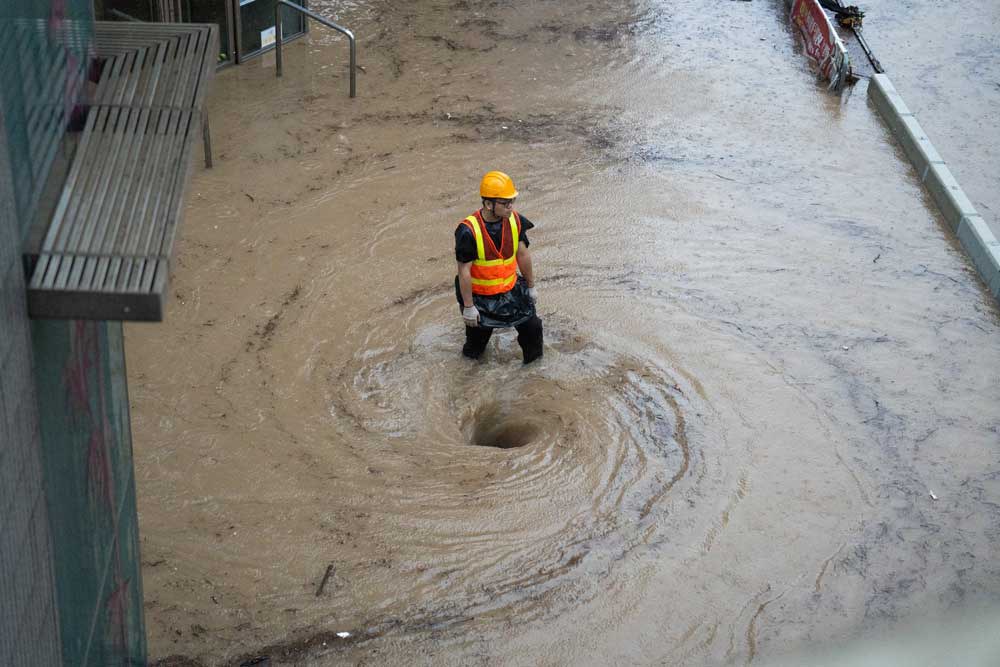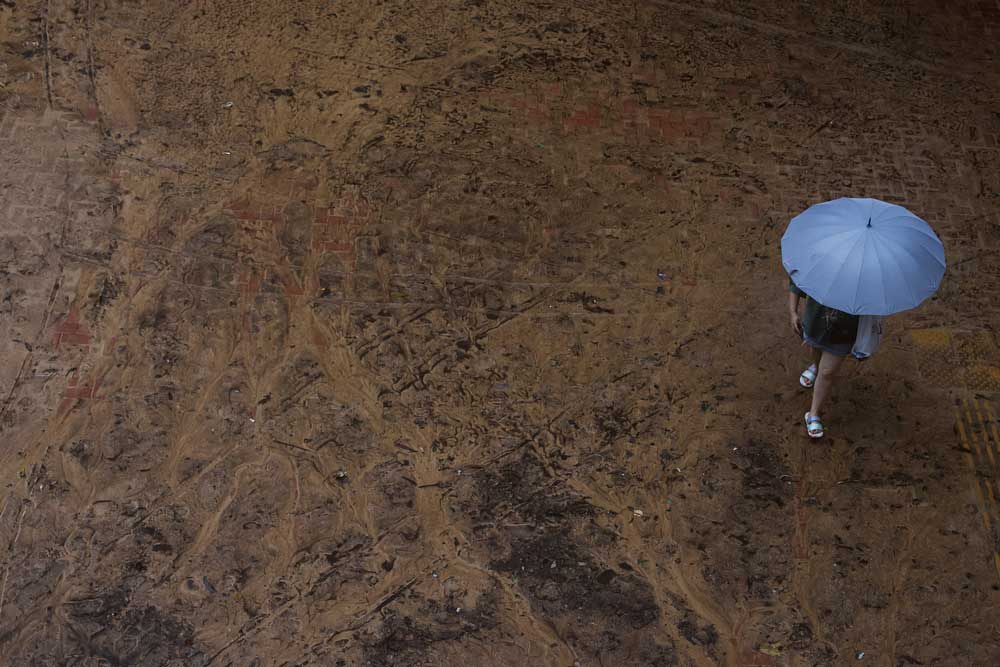Hong Kong streets deluged after record rainfall in wake of Super Typhoon Haikui
Share
Hong Kong was hit by sudden and torrential flooding after record levels of rainfall fell on the city in the wake of Super Typhoon Haikui, turning city streets and subway escalators into raging torrents and shopping malls into muddy swimming pools.
Two people died and 110 were injured as a huge rainstorm dumped more than 600 millimeters (23 inches) of rain on Hong Kong in a 24-hour period late Thursday and into Friday, closing schools and workplaces. Residents were told to shelter in place and avoid low-lying areas.
Emergency services fielded more than 1,000 calls for help, in the heaviest rainfall the city has seen since records began in 1884.
Video and photos on social media platforms showed torrents of muddy water cascading down a steep street, almost engulfing a double-decker bus, while others showed a flooded subway station with water flowing past the legs of passengers sitting in a subway train.
In other clips, passengers sat helpless aboard a public light bus as it was engulfed in fast-flowing floodwaters, while another showed a woman with a white umbrella get swept down a city street by floods.
Close by, a landslide engulfed part of the Yiu Tung Estate in Shau Kei Wan, replacing the retaining wall with a large waterfall that propelled huge quantities of mud and large boulders onto a nearby road and golf course.
Submerged cars, flooded stations
In Wong Tai Sin district of Kowloon, large numbers of buses, taxis and private cars were left submerged on Lung Cheung Road at rush hour, with the river-like floods reaching shoulder height at their peak.
Floodwater poured into several exits of the nearby MTR subway station and onto platforms and into trains, also dumping mud all over the lower level of a nearby shopping mall.
A resident of Sheung Shui, a town in the New Territories not far from the internal border with mainland China, said he has questions about the discharge of floodwater from a reservoir in neighboring Shenzhen and whether it caused flooding across the border in Hong Kong.
“It actually started to rain in Hong Kong on Thursday evening, so why did the government only make an announcement a little over 10 minutes before Shenzhen’s flood discharge?” the resident, who gave only the surname Wong for fear of reprisals, told Radio Free Asia.


“The government claimed that Shenzhen’s flood discharge was planned, but it seems that Shenzhen suddenly decided to discharge the flood, and that the Hong Kong government was caught off guard and only notified just moments before the flood was discharged,” Wong said.
“I have lived in the New Territories for almost my entire life and have never experienced such severe flooding, not even when a strong typhoon hit Hong Kong last week,” he said.
“Human lives are at stake – the Hong Kong government needs to tell the truth openly and honestly.”
Scant warning
Many more residents piled onto the government’s Facebook accounts to complain that they had received scant warning, as the government moved to fend off criticism that its response to the disaster had simply been too slow.
It also denied that the flooding seen near the internal border with mainland China had anything to do with the discharge of floodwaters from a reservoir near the neighboring city of Shenzhen.
Hong Kong second-in-command Eric Chan told a news conference on Friday: “It only rains this heavily once in 500 years [and] that kind of rainfall is very hard to predict.”
The Hong Kong Observatory initially issued several thunderstorm warnings in a row, and only issued a flood warning and a warning of “heavy rain in some areas” at around 7.50 p.m. local time, hastily updating it 30 minutes later to “widespread heavy rain may be possible.”
It didn’t issue an amber rain warning until 9.25 p.m. local time, changing it to a red warning 25 minutes later and to the highest-level black rain warning at 11:05, along with a landslide warning.
“It’s very hard to make accurate predictions about where it will fall, how widespread it will be, and how much it will rain,” Chan said. “That’s why we could inform the public sooner.”
Security chief Chris Tang said the flooding near the border wasn’t caused by the discharge of floodwaters in Shenzhen.
“The flood discharge from the Shenzhen reservoir was a safety measure for both Shenzhen and Hong Kong, and it was also part of the original plan,” Tang said.
“Water levels in Hong Kong’s rivers didn’t rise due to this flood discharge in Shenzhen, and they only rose to the level of their containing walls,” he said.


Tang’s department didn’t activate emergency protocols via its Emergency Monitoring and Support Centre until just after 11.00 p.m. on Thursday night local time.
The government said it had sent vehicles just before midnight to pick up residents from six villages in the border area that could be affected by flooding, and take them to temporary shelters.
Schools, workplaces shut
While weather warnings had been lifted by Friday, schools and workplaces were shut “due to extreme conditions caused by extensive flooding and serious traffic disruption, owing to torrential rain brought by the trough of low pressure associated with the remnant of Haikui,” the government said in a statement.
In neighboring Guangdong province, muddy flood water was also filmed cascading down into a railway station in Shanzhen’s Luohu district, while floods also engulfed Fenggang township in Guangdong’s industrial Dongguan district.
“The water was more than knee-deep,” a Fenggang resident who gave only the surname Gao told Radio Free Asia. “Some sections of road were 70-80 centimeters deep, while others were nearly a meter.”
“A little after 9.00 p.m. our entire street lost power,” Gao said. “I saw that some of the roadside stores were flooded, some of them to a depth of half a meter.”
In Guangzhou, tunnels in the Shiqiao subway station in Panyu district were submerged, while firefighters paddled rubber dinghies to rescue people trapped in the station.
Translated by Luisetta Mudie. Edited by Malcolm Foster.







